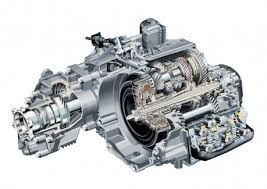Mobile:+86-311-808-126-83
Email:info@ydcastings.com
Aluminum Slab Casting Techniques and Innovations for Enhanced Production Efficiency
Aluminum Slab Casting An Overview
Aluminum slab casting is an essential process in the production of aluminum products, widely used in various industries due to the metal's lightweight properties, corrosion resistance, and excellent thermal and electrical conductivity. This casting method involves pouring molten aluminum into a mold to create a flat, rectangular slab, which can then be processed further for various applications, including the manufacture of automotive parts, building components, and consumer goods. In this article, we will explore the aluminum slab casting process, its advantages, applications, and future trends in the industry.
The Casting Process
The aluminum slab casting process typically begins with the melting of the aluminum alloys in a furnace, usually maintaining temperatures between 700-800 degrees Celsius. The alloy composition can be tailored based on the desired properties of the final product. Once the aluminum is molten, it is poured into a mold that defines the thickness and dimensions of the slab.
There are several types of casting methods employed in aluminum slab production, including direct chill (DC) casting, which is the most commonly used technique. In the DC casting process, the molten aluminum is poured into a vertical mold and cooled by water at the same time. The cooling rate plays a crucial role in determining the microstructure and mechanical properties of the final slab. As the aluminum solidifies, a thin layer forms on the surface while the rest remains molten, allowing for the gradual extraction of the semi-solidified aluminum, creating long, continuous slabs.
Once the casting is complete, the slabs are removed from the mold and undergo several processing steps, such as homogenization, sawing, and surface treatment. The homogenization process involves heating the slabs to a specific temperature to evenly distribute alloying elements and eliminate excess segregation. This step is critical for enhancing the mechanical properties and ensuring the material's uniformity.
Advantages of Aluminum Slab Casting
One of the significant advantages of aluminum slab casting is its ability to produce high-quality aluminum with a consistent cross-section and surface finish. This consistency minimizes waste and reduces the need for extensive secondary processing. Additionally, aluminum slabs can be produced with various alloy compositions, which allows manufacturers to create tailored solutions for specific applications.
The lightweight nature of aluminum also provides benefits in many sectors, particularly in automotive and aerospace applications, where weight reduction can lead to improved fuel efficiency and performance. Furthermore, aluminum’s resistance to corrosion makes it a preferred choice for construction materials, as it can withstand harsh environmental conditions without significant deterioration.
aluminum slab casting

Applications of Aluminum Slabs
Aluminum slabs have a wide range of applications across various industries. In the automotive sector, they are used to manufacture body panels, engine components, and other structural parts that contribute to overall weight reduction and fuel efficiency. The aerospace industry utilizes aluminum slabs for aircraft fuselages and wings due to their high strength-to-weight ratio.
In construction, aluminum slabs serve as essential materials for window frames, doors, roofing systems, and cladding. Their anti-corrosive properties ensure longevity and reduced maintenance costs for building structures. Moreover, aluminum slabs are increasingly used in consumer electronics, such as casings for laptops and smartphones, thanks to their aesthetic appeal and lightweight characteristics.
Future Trends
As the demand for sustainable and lightweight materials continues to grow, the aluminum slab casting industry is likely to see significant advancements in technology and methods. Innovations in recycling processes for aluminum can enhance sustainability commitments while reducing production costs. Many companies are also exploring the integration of automation and artificial intelligence in the casting process to improve efficiency and quality control.
Moreover, the push for electric vehicles (EVs) is expected to drive demand for aluminum slabs, as manufacturers seek ways to reduce vehicle weight and improve performance. As the industry adapts to these trends, aluminum slab casting will continue to play a crucial role in meeting the changing needs of various sectors.
Conclusion
Aluminum slab casting is a vital process in the aluminum industry with numerous applications in diverse fields. Its advantages, including lightweight properties and corrosion resistance, position it as a preferred choice for manufacturers. As technology advances and sustainability becomes increasingly important, the future of aluminum slab casting looks promising, paving the way for innovations that will continue to transform the landscape of material manufacturing.
-
Why Should You Invest in Superior Pump Castings for Your Equipment?NewsJun.09,2025
-
Unlock Performance Potential with Stainless Impellers and Aluminum End CapsNewsJun.09,2025
-
Revolutionize Your Machinery with Superior Cast Iron and Aluminum ComponentsNewsJun.09,2025
-
Revolutionize Fluid Dynamics with Premium Pump ComponentsNewsJun.09,2025
-
Optimizing Industrial Systems with Essential Valve ComponentsNewsJun.09,2025
-
Elevate Grid Efficiency with High-Precision Power CastingsNewsJun.09,2025











